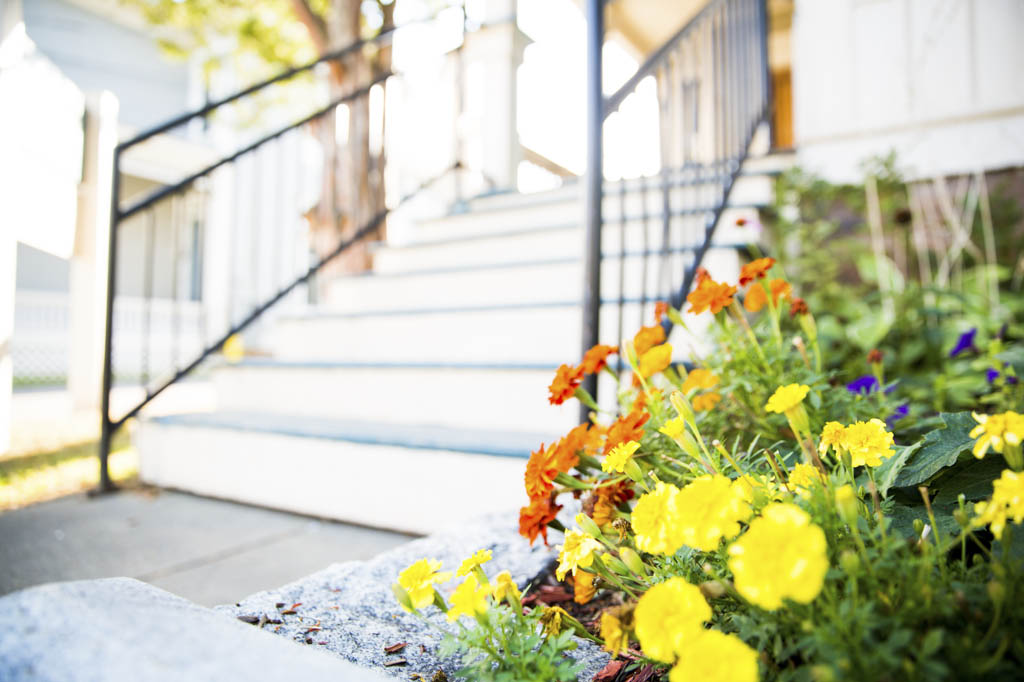Spring ahead by being proactive with home upkeep.
By Erik J. Martin
CTW Features
So you’ve survived another winter without straining your back from snow shoveling or taking a bad spill caused by black ice. Your home, however, may not be so lucky. Jack Frost may have exacted a terrible toll on your domicile that can be easy to overlook until you discover an expensive repair is needed.
That’s why it important to create a to-do checklist and conduct a spring-cleaning and maintenance tour of your home. Because prepping your property for warmer weather involves a lot more than switching the thermostat from “hot” to “cold” – you also want to ensure that your residence is running at peak efficiency, packs powerful curb appeal during the growing season, and is more impervious to weather damage now that winter has flown the coop.
“Acting now, while repairs are small, can save you so much money in the long run,” said Alice Lund, owner of Handyman Connection of Johnson County in Miriam, Kans. “It might be tempting to skip the maintenance, ignore that rusty gutter or pretend you didn’t feel how soft the wood was on your door trim. But if ignored, small repairs can turn into major projects that will be more costly.”
Experts recommend the following spring home upkeep steps:
1. Inspect for and fix any exterior issues, including loose siding or shingles, needed tuck-pointing, foundation problems, deck or porch damage and wood rot.
“If you find any damaged or softened wood, address problem areas quickly to avoid leaks that will eventually cause more invasive water damage and attract bugs,” Lund said.
2. Inspect, clean and secure gutters and downspouts.
“If they’re not free of leaves, they can become heavy and pull away from your house, causing leaks that can lead to mold growth,” said Robert Weitz, a New York City-based certified microbial investigator.
3. Test all outdoor faucets and electrical outlets and check for damage.
4. Evaluate the integrity of caulking and weather-stripping around your exterior trim and windows, and clean your windows inside and out.
5. Remove any tree and leaf debris from your property, and trim landscaping.
“Maintain the trees around your home, especially tree limbs within 10 feet of your home,” said Carol Hanover, regional field director of Risk Control for Travelers Insurance in Hartford, Conn.
6. Examine your water heater and test your basement sump pump. Drain the former and check for indications of rust, leaks or damage.
“And if your sump pump isn’t working, it needs to be replaced before spring rains arrive or your basement could be at risk of flooding,” said Paul Abrams, director of public relations for Cincinnati-headquartered Roto-Rooter Services Company.
7. Prepare your AC system. Have it checked and serviced by an HVAC professional.
“Clean outside AC condenser coils by using a garden hose and rinsing the unit from the top working down, change your air filters once a month, clean vents when necessary and remove debris and overgrowth near your outside unit,” said Brooke Hoyt, vice president of operations for Platinum Home Warranty in Scottsdale, Ariz.
8. Prep your kitchen and laundry areas. Clean and vacuum your refrigerator’s condenser coils to improve appliance efficiency; check and clean the exhaust fan filter above your stove; and replace cracked or worn washing machine hoses with braided stainless-steel jacketed hoses.
“Also, clean the vent duct that connects to the back of your dryer, where lint can build up over the winter, increasing energy bills and creating a fire hazard,” said John Bodrozic, co-founder of HomeZada in El Dorado Hills, Calif.
9. Cover all your indoor bases. Remove dust build-up from interior surfaces to improve indoor air quality and reduce stress on your HVAC system; test smoke and carbon monoxide detectors and replace the batteries; and flip the switch on ceiling fans so that the blades move in a counterclockwise/forward direction (to make interiors feel cooler).
Taking the time and spending resources necessary to address these issues will pay off in the long run.
“Most of these tasks are relatively easy to do,” Bodrozic said. “But not doing them leads to a home environment where your energy costs will go up needlessly and you’re likely to have expensive fix-it costs, greater risks and air quality that’s worse for occupants.”
© CTW Features

